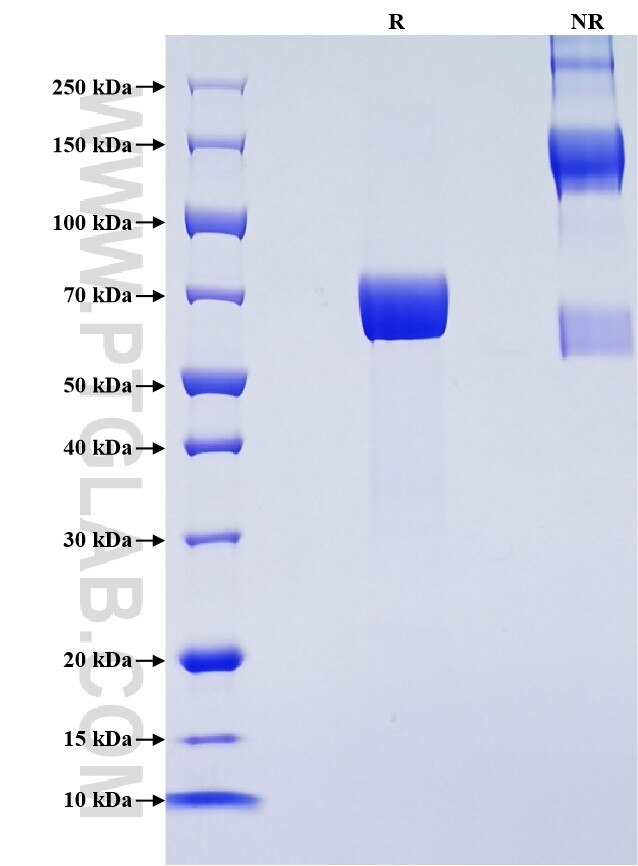Recombinant Rat FSTL1 protein (rFc Tag)
Species
Rat
Purity
>90 %, SDS-PAGE
Tag
rFc Tag
Activity
not tested
Cat no : Eg2605
Validation Data Gallery
Product Information
| Purity | >90 %, SDS-PAGE |
| Endotoxin | <0.1 EU/μg protein, LAL method |
| Activity |
Not tested |
| Expression | HEK293-derived Rat FSTL1 protein Glu19-Ile306 (Accession# Q62632) with a rabbit IgG Fc tag at the C-terminus. |
| GeneID | 79210 |
| Accession | Q62632 |
| PredictedSize | 58.6 kDa |
| SDS-PAGE | 60-80 kDa, reducing (R) conditions |
| Formulation | Lyophilized from 0.22 μm filtered solution in PBS, pH 7.4. Normally 5% trehalose and 5% mannitol are added as protectants before lyophilization. |
| Reconstitution | Briefly centrifuge the tube before opening. Reconstitute at 0.1-0.5 mg/mL in sterile water. |
| Storage Conditions |
It is recommended that the protein be aliquoted for optimal storage. Avoid repeated freeze-thaw cycles.
|
| Shipping | The product is shipped at ambient temperature. Upon receipt, store it immediately at the recommended temperature. |
Background
Follistatin-like 1 (FSTL1), initially discovered as a TGF-β1-induced gene, encodes a 308 amino acid secreted glycoprotein with a follistatin domain and two non-functional calcium-binding motifs. FSTL1 has been reported to be involved in the fate determination and maturation of epithelial cells. Ablation of the FSTL1 gene in the mouse results in several structural developmental defects and neonatal lethality due to respiratory failure, demonstrating its functional importance. FSTL1 has been reported to exhibit both pro- and anti-inflammatory actions, with a specific anti-apoptotic and protective effect in cardiac or renal cell injury.
References:
1.Mouillet JF, et al. (2015) Placenta.36(11):1231-8. 2.Murakami K, et al. (2012) FEBS Lett. 17;586(4):319-24. 3.Sylva M, et al. (2013) Birth Defects Res C Embryo Today.99(1):61-9. 4.Umezu T, et al. (2010) Proc Natl Acad Sci USA.107(10):4601-6.
